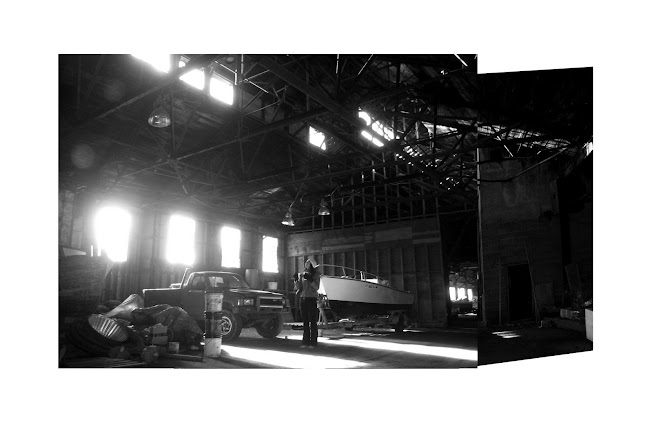"[Fulfilling America's promise] will require a renewed sense of responsibility from each of us to recover what John F. Kennedy called our "intellectual and moral strength". Yes, government must lead on energy independence, but each of us must do our part to make our homes and businesses more efficient... Individual responsibility and mutual responsibility - that's the essence of America's promise."
Remarks of Senator Barack Obama
"The American Promise"
Democratic National Convention
August 28, 2008
Denver, Colorado
university of maryland school of architecture master of architecture program
8.29.2008
8.28.2008
[pattern] britain from above
The following are part of a collection from the BBC where GPS information of human activity is mapped. Visit the site for video.
internet activity

landline telephone activity (note: mobile communications not included...)

aircraft traffic

While this study is presented within the framework of a globally connected Britain, the graphic analysis reveals still the linear language of connecting point A to point B. The real innovation of our age is not so much the network (see Domenico Fontana & Pope Sixtus V), but the speed of which we now process between connections at our nodes (see Kevin Lynch).
Perhaps the most critical aspect seen here is the sheer number of "traffic" hubs. This observation raises several discussions relative to scale of human activity (decide for yourself what that could mean). But it also suggests that the innovation of the 20th century production model towards a 21st century prototype requires a networked flow of production and information exchange. Rather than a single direct input/output logic (e.g. combustion engines, labor + raw materials = product), a more efficient (in terms of energy, innovation, market relevance, etc) system depends on many overlapping simultaneous input/output logics, ultimately collected & edited in a series (or layers) of hubs and nodes.
In this case, the current priorities depend on qualities access, circulation, and functional overlap.
internet activity

landline telephone activity (note: mobile communications not included...)

aircraft traffic

While this study is presented within the framework of a globally connected Britain, the graphic analysis reveals still the linear language of connecting point A to point B. The real innovation of our age is not so much the network (see Domenico Fontana & Pope Sixtus V), but the speed of which we now process between connections at our nodes (see Kevin Lynch).
Perhaps the most critical aspect seen here is the sheer number of "traffic" hubs. This observation raises several discussions relative to scale of human activity (decide for yourself what that could mean). But it also suggests that the innovation of the 20th century production model towards a 21st century prototype requires a networked flow of production and information exchange. Rather than a single direct input/output logic (e.g. combustion engines, labor + raw materials = product), a more efficient (in terms of energy, innovation, market relevance, etc) system depends on many overlapping simultaneous input/output logics, ultimately collected & edited in a series (or layers) of hubs and nodes.
In this case, the current priorities depend on qualities access, circulation, and functional overlap.
[program] production pattern
From "The Wealth of Networks" by Yochai Benkler:
The most advanced economies in the world today have made two parallel shifts that, paradoxically, make possible a significant attenuation of the limitations that market-based production places on the pursuit of the political values central to liberal societies. The first move, in the making for more than a century, is to an economy centered on information (financial services, accounting, software, science) and cultural (films, music) production, and the manipulation of symbols (from making sneakers to branding them and manufacturing the cultural significance of the Swoosh). The second is the move to a communications environment built on cheap processors with high computation capabilities, interconnected in a pervasive network--the phenomenon we associate with the Internet. It is this second shift that allows for an increasing role for nonmarket production in the information and cultural production sector, organized in a radically more decentralized pattern than was true of this sector in the twentieth century. The first shift means that these new patterns of production--nonmarket and radically decentralized--will emerge, if permitted, at the core, rather than the periphery of the most advanced economies. It promises to enable social production and exchange to play a much larger role, alongside property- and marketbased production, than they ever have in modern democracies.
The most advanced economies in the world today have made two parallel shifts that, paradoxically, make possible a significant attenuation of the limitations that market-based production places on the pursuit of the political values central to liberal societies. The first move, in the making for more than a century, is to an economy centered on information (financial services, accounting, software, science) and cultural (films, music) production, and the manipulation of symbols (from making sneakers to branding them and manufacturing the cultural significance of the Swoosh). The second is the move to a communications environment built on cheap processors with high computation capabilities, interconnected in a pervasive network--the phenomenon we associate with the Internet. It is this second shift that allows for an increasing role for nonmarket production in the information and cultural production sector, organized in a radically more decentralized pattern than was true of this sector in the twentieth century. The first shift means that these new patterns of production--nonmarket and radically decentralized--will emerge, if permitted, at the core, rather than the periphery of the most advanced economies. It promises to enable social production and exchange to play a much larger role, alongside property- and marketbased production, than they ever have in modern democracies.
Subscribe to:
Posts (Atom)
